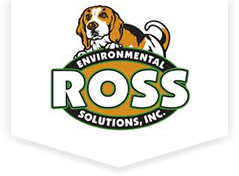Ants feed on and contaminate human foods, infest buildings, and make unsightly mounds in lawns. Some ants can inflict painful bites or stings. Ants don’t attack or eat fabrics, leather or wood inside houses, but some species can make nests in decaying wood in structures.The ant has a narrow waist with either one or two joints between the thorax and abdomen. The antennae are elbowed. Winged reproductive ants have four wings with the top pair being much larger in size than the hind pair.Ants are often confused with termites but a termite has a broad waist and straight antennae, and its four wings are equal size. Ants live and work together in colonies made up of three castes: workers, queens and males. Worker ants are sterile females that seldom have wings.Queens usually have wings but lose them after mating. The primary function of the queen ant is reproduction. The male ant is usually winged and retains its wings until death. The sole function of the male ant is to mate with an unfertilized female reproductive. After mating occurs, the male ant dies. Most ants eat a variety of foods, although some have specialized food habits. They locate food sources by random foraging. When a scouting ant finds promising food, she carries it back to the nest. Other workers then follow scent trails back to the food source. Ants will travel great distances to get water. Workers are able to carry water to the colony in their stomachs.
Fill out the form on the right to schedule an appointment today.
Or Call Toll-Free: 1-800-PEST-CONTROL (1-800-737-8266)
Ant Control
- Location of the nest(s) and treatment with a residual is ideal. Try following ants back from their food source to the nest. Dusting the voids of outside ground-floor walls and infested interior walls along with nest treatments are the most effective way to control ants. Dusts are the best formulation for this type of control because they can be puffed into empty areas that contain nests. Dusts provide the longest residual control in dry areas and can be tracked into the nest by foraging ants.
- Bait treatments are effective on many types of ants. Make sure the bait you select is labeled for this particular use. Baits should be located as close to trails as possible so that foraging ants can easily find them. Baits are available in pre-packaged stations, gels, liquids and granular forms.
- Drench or injection treatments are used to control mound-dwelling ant species outdoors.
- The best approach to ant control in the home is cleanliness. Food should be stored in tight containers. Remove plants that attract ants, and reduce moisture sources such as condensation and leaks.
- Location of the nest is the key to controlling ants because they’re social insects. So killing large numbers of individual ants won’t work. It’s important to identify the species before trying to control the ants.
- Place attractive materials like jelly, oils, or proteins to attract ants that can then be followed to their nest. Find the ant nest by watching their movements.
- Look for ant mounds in the ground and nests near foundations, sidewalks, patios and driveways. Also, check decaying logs, tree stumps, trunks and underneath rocks. Indoors ants may nest in a wall, behind a baseboard, under insulation or under the house.
Fill out the form on the right to schedule an appointment today.
Or Call Toll-Free: 1-800-PEST-CONTROL (1-800-737-8266)


